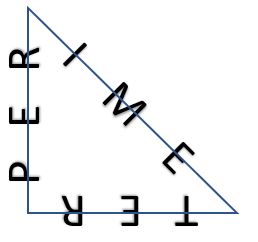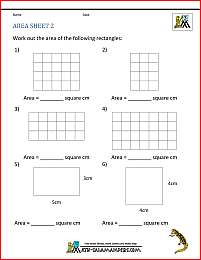- Home |
- About |
- Contact Us |
- Privacy |
- Newsletter |
- Shop |
- Donate
Perimeter of Right Triangle

Welcome to our Perimeter of Right Triangle support page.
We will explain how to find the perimeter of a right-angled triangle and show you some worked examples.
Quicklinks to ...
Perimeter of Right Triangle support page
- Perimeter is the distance around the outside of a shape.
- It is measured as a length and can be in a range of units such as cm, inches, feet, miles, etc.
When we are trying to find the perimeter of a right triangle, there are several different ways we can do this.
Which way you select will depend on several factors, such as whether the shape is drawn to scale and whether the side lengths are given.
Perimeter of a Right Triangle Option 1 - Side lengths are all given
This is the easiest example to deal with.
- All you need to do to find the perimeter of right triangle is to add up the three side lengths.
Examples
Example 1

In the example above, we just need to add up the lengths of the three sides:
3cm + 4cm + 5cm = 12cm.
So the perimeter of right triangle is 12cm.
Option 2 - Side lengths are not given but the shape is drawn to scale.
This is another straightforward example to work out.
- All you need to do is to use a ruler, measure the sides and add up the length of each of the sides.
Note that you will often end up with a decimal answer for your perimeter.
Option 3 - the shape is not to scale and the longest side is missing its value.
To work this out, we need to use Pythagoras' theorem to find the longest side and then add on the lengths of the other two sides.
- Use Pythagoras' theorem to find the length of the longest side and then add on the lengths of the other two sides.
Examples
Example 1 (not drawn to scale)

Pythagoras' theorem says that the square of the two shorter sides on a right triangle is equal to the square of the longest side (the hypotenuse).
So if h is the longest side (or hypotenuse), then h2 = 62 + 32.
This gives us that h2 = 36 + 9 = 45
So h must equal √45 which is equal to 6.71 to 2dp.
The next step is to add up the lengths of all the sides.
6.71cm + 6cm + 3cm = 15.71cm
So the perimeter of the right triangle is 15.71cm to 2dp.
Example 2 (not drawn to scale)

Using Pythagoras' theorem again.
So if h is the longest side (or hypotenuse), then h2 = 42 + 42.
This gives us that h2 = 16 + 16 = 32
So h must equal √32 which is equal to 5.66 to 2dp.
The next step is to add up the lengths of all the sides.
5.66cm + 4cm + 4cm = 13.66cm
So the perimeter of the right triangle is 13.66cm to 2dp.
Option 4 - the shape is not to scale and one of the legs (shorter sides) is missing its value.
To work this out, we need to use Pythagoras' theorem to find the shorter side (or leg) that is missing and then add on the lengths of the other two sides.
- Use Pythagoras' theorem to find the length of the leg and then add on the lengths of the other two sides.
Examples
Example 1 (not drawn to scale)
Find the perimeter of right triangle below.

Pythagoras' theorem says that the square of the two shorter sides (legs) on a right triangle is equal to the square of the longest side (the hypotenuse).
So if s is the leg that is missing, then s2 + 52 = 82.
So s2 + 25 = 64
This means that s2 = 64 - 25 = 39
So s = √39 = 6.24cm to 2dp.
The next step is to add up all the sides.
6.24cm + 5cm + 8cm = 19.24cm.
So the perimeter of the right triangle is 19.24cm to 2dp.
Example 2 (not drawn to scale)

Pythagoras' theorem says that the square of the two shorter sides on a right triangle is equal to the square of the longest side (the hypotenuse).
So if s is the leg that is missing, then s2 + 62 = 102.
So s2 + 36 = 100
This means that s2 = 100 - 36 = 64
So s = √64 = 8cm.
The next step is to add up all the sides.
8cm + 6cm + 10cm = 24cm.
So the perimeter of the right triangle is 24cm.
Perimeter of Right Triangle worksheets
If you would like to practice these skills yourself, why not try our worksheets all about finding the perimeter of a right triangle.
The first sheet involves measuring with a ruler only.
The second sheet involves using Pythagoras' theorem (whole number answers only)
The third and fourth sheets involve finding the perimeters of right triangles using Pythagoras' theorem with answers to 1dp.
More Recommended Math Resources
Take a look at some more of our resources similar to these.
More Perimeter Resources
We have a selection of perimeter help and support as well as perimeter worksheets.
The perimeter worksheets are all graded in order from easiest to hardest.
Using these sheets will help your child to:
- work out the perimeter of a range of rectangles;
- find the perimeter of rectilinear shapes.
Area Worksheets
The area sheets are all graded in order from easiest to hardest.
Using these sheets will help your child to:
- work out the areas of a range of rectangles;
- find the area of rectilinear shapes.
All the sheets in this section support Elementary Math Benchmarks.
Online Perimeter Practice
Another way to learn about 'What does perimeter mean' is through exploring shapes.
This online area and perimeter activity by toytheater.com will let you explore 'what does perimeter mean' through creating your own shapes.
The link below will open in a new browser window.
How to Print or Save these sheets 🖶
Need help with printing or saving?
Follow these 3 steps to get your worksheets printed perfectly!
How to Print or Save these sheets 🖶
Need help with printing or saving?
Follow these 3 steps to get your worksheets printed perfectly!
Subscribe to Math Salamanders News
Sign up for our newsletter and get free math support delivered to your inbox each month. Free seasonal math grab pack included.
Return to Perimeter Worksheets
Return to Measurement Worksheets
Return from Perimeter of Right Triangle page to Math Salamanders Homepage
Math-Salamanders.com

The Math Salamanders hope you enjoy using these free printable Math worksheets and all our other Math games and resources.
We welcome any comments about our site or worksheets on the Facebook comments box at the bottom of every page.











New! Comments
Have your say about the Math resources on this page! Leave me a comment in the box below.